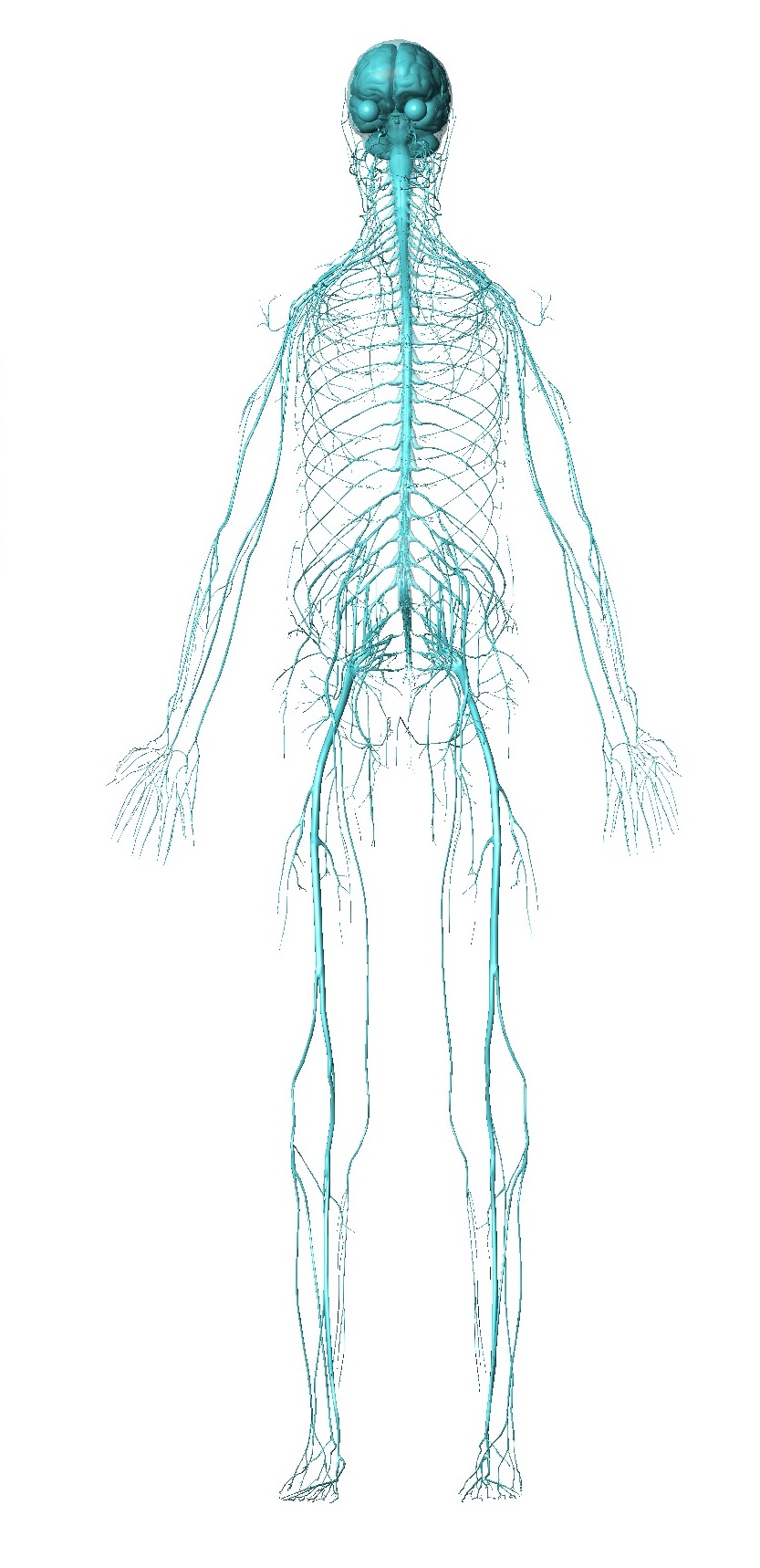Nerves are responsible for transmitting information from the various parts of the body (what we feel as sensations, for example heat or pain) to the brain, in order for an appropriate action to occur. For example, if you hold a very hot object there are signals sent towards your brain to warn you of the potential danger. The reaction might be that you’ll retract your hand to prevent it from being burnt. With this type of reaction the signal may not actually reach the brain, instead automatic responses deal with the situation very quickly – the system is designed this way exactly to prevent a burn occurring.

The human nervous system
The work we do as soft tissue therapists involves direct interaction with the peripheral nervous system, and it is this part of the nervous system which is most vulnerable to injury through compression or tension forces. Whether the trauma to the nerves is sudden or has a gradual onset, the response will be the same – you will feel pain. If a nerve is stretched suddenly or pinched the result can be muscle weakness and burning sensations along the nerve path (e.g. down the leg). The aim of massage therapy for nerve trauma is to reduce muscle tightness or congestion, thereby allowing the nerves the space they need to operate in the pain-free range, rather than being compressed by soft tissues.
It isn’t always muscles which impinge upon nerves – other soft tissues can cause impingement too, such as fascia, skin, ligaments and bones. If any of these are shortened or in some way reduce the optimum space available for nerves then you’ll experience pain, discomfort, muscle weakness, and possibly numbness and tingling. The clever part of the peripheral nervous system is that it is highly organised. Nerves exit various places along the spine and form a map throughout the body. So we know that if symptoms are experienced in the arm, a good area for us to start working on will be the neck and armpit. This is because the brachial plexus (a group of nerves) leaves the spine from the neck, passes through the armpit and travels down the arm and hand.
We spoke in an earlier article about Carpal Tunnel Syndrome and in that we mention the median nerve – this is one of the nerves which makes up the brachial plexus. This is just one specific condition which involves a nerve and can benefit from soft tissue therapy. Another common condition is Piriformis Syndrome (or indeed Sciatica) where the sciatic nerve is compressed or impinged in some way by the piriformis muscle. With this condition you may experience pain in the buttocks, or anywhere along the nerve path which travels down your leg. By releasing tension within muscles and soft tissues around the gluteal region can help to ease symptoms and eradicate the cause. You should also gain mobility in areas that were previously tense, which could ultimately lead to greater range of movement and improved ability in your chosen sport or activity.




